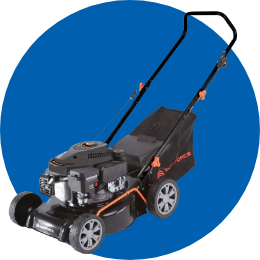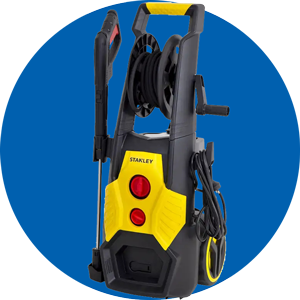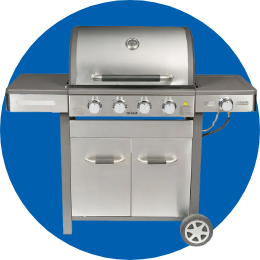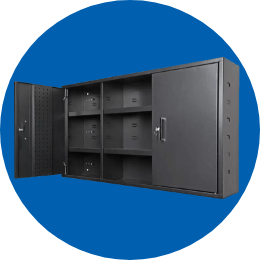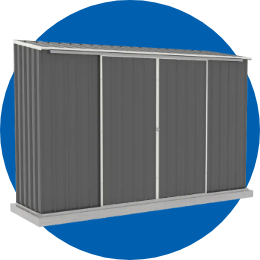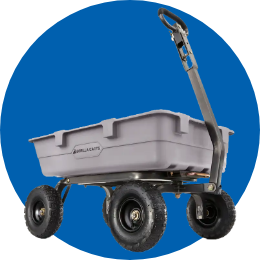- 9 March 2021
Build a pool fence
Construct a pool safety fence – with a little help from Mitre 10.
Ahh, balmy summer days of family fun around the pool, great family entertainment and togetherness, the creation of treasured and good memories...but sadly this source of fun can also become the worst possible nightmare.
Your materials checklist
- Posts 2100mm and 2400mm long
- Post caps 1 per post
- Fence panels 2400mm long (can be pre-cut to length)
- Panel rail flanges 4 per fence panel
- Tek screws for fixing rail flanges
- Pool gate generally to suit 980mm opening but check this
- Pool gate can come in a kit (single components gate fitting pack), or buy as needed, eg: • Post for locking side of gate • Child proof pool gate latch • Adjustable spring hinge
- Concrete mix 1 bag per post hole 40kg or equivalent
- Pine fence propping: Assortment - 90 x 35mm and 45mm blocks 4 lengths 1800mm - 70 x 20mm per fence panel
Step 1: Setting out
The fence needs to be back from the pool enough distance to allow easy access and use, and one selected location enough to allow room for relaxing on a towel or in a deck chair poolside. A recommended minimum for general walkway would be 1.5 metres. Once the fence line location is decided upon carefully check for any underground services such as water, phone, electricity etc. Now of course is the time to do a sketch plan and confirm that your proposal meets with current regulations with the local authorities; a permit will be necessary before construction can begin. First job on site is to mark the line of the fence. Drive a stake into the ground I metre or so beyond the corners of the fence, now stretch a string line from peg to peg (Fig. 1). Mark out the position of the gate posts, and from here mark out the position of the fence posts, you may want to divide the spacings for panels from corner to corner equally which would necessitate cutting each panel to length. Alternatively one of the last panel bays near a corner could be the only one to cut to length. A good idea is to lay out the panels and gate along the fence set-out line to give accurate post locations.


Step 2: The posts
Firstly dig the corner and gate post holes, these need to be 200mm square and 600mm deep. To make your job easier you could consider hiring or buying an auger type post hole digger. Stand the corner posts in the holes at the intersection of the string lines, temporarily prop them plumb using clamps and propping timber (Fig. 2). Next mix some concrete mix and fill the post hole up to 50mm below ground level. Allow the concrete to set for 24 hours before further working on the posts. While waiting for this to set you can excavate the intermediate post holes.


Step 3: Panels and posts
Carefully measure the height of the fence panels, and calculate the height the posts will need to be taking into account the space between ground to the bottom of the fence and the extra length of the posts to extend above the top of the fence panels, measure and mark the corner post heights (Fig 3). Next, stretch a string line across the top of the corner posts and adjust for level using the line level.
Remove the string line and cut off the excess. File the rough edges of the posts smooth and stretch the line across the top of corner post to corner post (Fig 4), place a post in each hole and mark the height of the string line, this is the length to cut the posts. To save filing the rough cut end smooth, put the cut end of the post into the post hole, the smooth salvaged ends can go to the top!
Measure the location of the top rail onto the corner posts and fit the rail flange with the tek screws, also measure the same distance onto the intermediate posts and fit the top rail flanges to each side of the posts. The side of the panels with the rails on are to be on the poolside of the fence (that is inside the fence line with the pool).
Select the relevant fence panel and slide the bottom rail flange onto each end of the bottom rail. Place one panel into the end post top rail flange, make sure the panel is level using 90 x 45mm blocks between the panel and the ground. Place the next post into the post hole, push the top rail flange into the fence rail. Prop the post from each side so that it is plumb and secure keeping it in a straight line with the set-out line. Now drill and tek screw the bottom flange onto the posts (Fig 5). Move onto the next panels, securing them in the same manner progressively until reaching the corner.






Step 4: Final adjustment
Before concreting the posts verify that each post is in line, firmly propped and plumb, and set to the correct height. Once all this is correct the posts can be concreted in. Some people think that the concrete can be placed in the hole in its dry “from the bag” state and water then added to it. Please take note that this is not correct and will not be successful! The concrete needs to be mixed to a creamy consistency with water thoroughly prior to being placed in the hole. Fill the posts holes with concrete to within 50mm of the top of the hole (Fig 2), later soil and grass can be placed to conceal the concrete.


Step 5: The gate
Refer to the gate installation instructions - take extra care and time to ensure that the gate posts are located accurately to give the correct opening width for the gate, gate fittings and the appropriate clearance gap between gate and post.
Fit the bottom hinge bush to the post taking care to align the top line of the gate with the top line of the fence. Place the gate on the hinge and locate the top hinge flange, mark the holes and then remove the gate. Drill the holes for the bolts provided, locate the gate and fit the top hinge bracket to the posts (Fig 6).
Install the childproof locking mechanism carefully adhering to the fitting instructions which came with the device.






Step 6: Finishing touches
Fit the post caps to the posts with a rubber mallet. Make sure all screws and bolts are tight. Clean the site area of all debris, place soil and plant some grass seed to the base of the posts, Make sure that the gate operates smoothly and that the catch for the latch engages fully and firmly.
Finally, but most importantly
Job completed, and it looks great. But there remain some important things to look at, remember that this is all about safety. So we recommend that you set up a maintenance program for the pool fence. Check regularly that the gate operates freely and correctly and maintain that 100mm clearance between fence and ground. Keep shrubs clear fo the fence, as these could allow a child climbing access and will also inhibit clear supervision of the pool at all times. Do not leave children unattended in the pool enclosure. Know what to do in an emergency, the first few minutes are important and can be the difference between life and death. Some study on resuscitation techniques are a basic necessity for pool owners. In addition teaching children basic water safety and awareness is most worthwhile. This is best done under professional classes such as at your local pool, life-saving club, Aust Swim, or even your child’s school which generally have swim programs.
Its your design
There are a variety of panel styles to choose from, also a good selection of colours. So matching your house and decor should be a real breeze (Fig 7).




